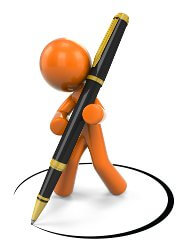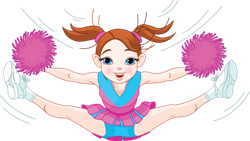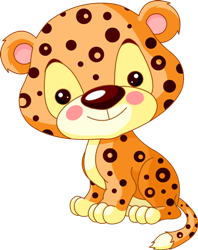Em Dash
Rules and Examples
 The
hyphen,
the en
dash, and the em dash are the three forms of dashes and lines
used in the English language.
The
hyphen,
the en
dash, and the em dash are the three forms of dashes and lines
used in the English language.Click Here for Step-by-Step Rules, Stories and Exercises to Practice All English Tenses
Let's begin by quickly reviewing the hyphen and en dash.
Hyphen ( - )
The hyphen is the shortest of the three forms of dashes and lines. It is made by pressing the hyphen/underscore key to the right of the zero.A hyphen ( - ) is used in compound words and split words.
Examples:
- ninety-nine
- mother-in-law
- great-looking woman
- vice-president
- mid-October
En Dash ( – )
The en
dash is about the same width as the letter "N". The en dash can be made in Microsoft Word by pressing the CTRL key + the minus sign -, located on the keypad.
Another way to form the en dash is to hold down the ALT key while typing 0150 on the keypad.
There are 4 uses for the en dash:
- show a range of number
There will be 15–25 kids at the game.
- show a period of time
The meetings will be held October 11–October 15, 2012.
- show distance
The flight from Africa–America is long.
- game scores
The team won the game 15–10.

Em Dash ( — )
The em dash is the longest of the three dashes and lines in the English
language. The em dash is about the same width as the letter "M".
On the keyboard
- The em dash is made on most PCs by holding down the ALT key while
typing 0151
on the keypad ( — ).
- The em dash can be made in Microsoft Word
by pressing CTRL
+ ALT +
the minus sign -, located on the keypad.
- On a Mac
computer, the em dash is made by pressing ALT + SHIFT + the
hyphen key,
located to the right of the zero.
Using an em dash
We use the em dash in sentences to create a strong break to show an interruption, a change of thought, or to show emphasis. The em dash can be used in place of some commas, parentheses, colons, and semicolons.Notes:
- The em dash is mostly used in informal writing
such as friendly
letters, emails, and journals.
- Do not
overuse the em dash in formal writing, such as business
letters,
research papers, and articles.
- A good rule is to use parentheses,
commas, semicolons, and colons instead of em dashes in formal writing.
- There should be no spaces before or after an em dash.
Rules:
1. Use em dashes in place of commas or parentheses to create a break in a sentence
Examples:- Please call my lawyer—Richard Smith—on Tuesday.
This sentence could also be written with commas or parentheses.
Please call my lawyer, Richard Smith, on Tuesday.
Please call my lawyer (Richard Smith) on Tuesday.
- I talked to Mr. Johnson—my son's math teacher—at the game
on Friday.
This sentence could also be written with commas or parentheses.
I talked to Mr. Johnson, my son's math teacher, at the game on Friday.
I talked to Mr. Johnson (my son's math teacher) at the game on Friday.

2. Use an em dash like a colon or semicolon to create emphasis
A) In place of a colon:- Mom needs four things at the store—butter, milk, flour, and
bread.
This sentence would be written with a colon in formal writing.
Mom needs four things at the store: butter, milk, flour, and bread.
- The house rule is simple—clean up after yourself!
This sentence would be written with a colon in formal writing.
The house rule is simple: clean up after yourself!
- My sister loves chocolate—my brother loves vanilla
This sentence would be written with a semicolon in formal writing.
My sister loves chocolate; my brother loves vanilla.
- Tim got an "A" on his spelling test—therefore, he gets a
longer recess.
This sentence would be written with a semicolon in formal writing.
Tim got an "A" on his spelling test; therefore, he gets a longer recess.
3. Use an em dash to show a sudden change of thought
Examples:- I was going to buy a—what did you say she wanted for her
birthday?
- Mom needs to talk to you about—oh, please excuse me! I did
not know you
had company.
- I had a great day at the
zoo—hey! Is that a jaguar?

Get Updates, Special Offers, and English Resources
Download your FREE GIFT (the first two chapters of
English Short Stories Book and Workbook)
as soon as you join!

By submitting your email, you consent to receiving updates and newsletters from us and to the sharing of your personal data with third parties for the purposes of sending you communications. We will not spam you. You can unsubscribe at any time. For more information, please see our privacy policy.





